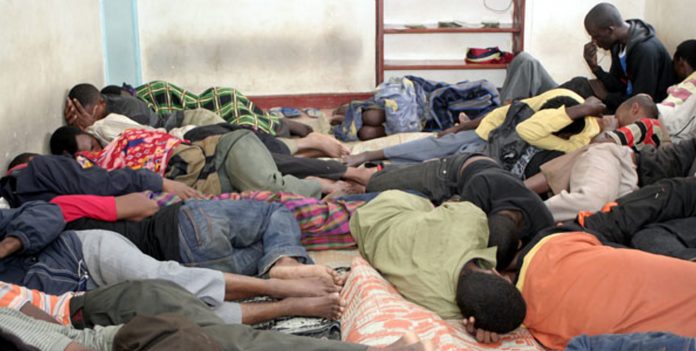Human trafficking is one of the world’s most organised crime rings that poses a serious threat to national security for any government. In Kenya, the majority of the members of the public acknowledge that human trafficking in Kenya is prevalent and high.
According to a National Crime Research Centre document, the perpetrators of human trafficking have been discovered to be businessmen, including owners of employment agencies, foreign job agents, brokers, unscrupulous tourists and corrupt public officials mostly from the refugee departments, immigration and borders.
The leading contributors of victims in Kenyan external human trafficking were discovered to be Ethiopia, followed by Somalia, Kenya and Tanzania. The leading foreign destinations for victims were Saudi Arabia, Qatar, Europe, South Africa and the USA.
In a recent expose on a local daily, operations of how young individuals mostly aged between 15-24 were deceived and exploited to work for criminal gangs were revealed. It detailed that Kenya’s main catchment areas for victims were rural, with the primary recruitment hub for human trafficking being the Daadab refugee camp.
Findings showed that the most prominent methods used in recruiting victims of human trafficking were the use of social media/networking platforms such as TikTok and WhatsApp. The job advertisers give their victims false hope and promise of a better life which can sustain them and their families.
They lure victims by informing them that they will give them an all-expenses paid trip to their destination country, with the expectation of a refund once they secure employment.
Upon recruitment, the victims are requested to keep details about their jobs and travel away from their families and close friends. The first phase of trafficking involves cutting all radio contact, meaning all phones get switched off, to prevent law enforcement and families from catching up to them.
According to local reports, the journey begins from the Daadab refugee camp and ends in Europe. In between, the route entails Garissa, Mwingi, Thika, Nairobi and Busia in that order before they cross the Ugandan border.
Once in Kampala, they are ferried to South Sudan, Libya before making the cross to Europe via boat. This is the most popular route used. Another entails Daadab, Garissa, Isiolo, Samburu Turkana, South Sudan to Libya.
Some victims fail to survive the journey primarily due to the weather and travel conditions they have been predisposed to. When they arrive in Libya, they are taken to concentration camps which become a test of their mettle.
In these camps, they are tortured and forced to work under extreme conditions. Reportedly, cases of organ harvesting also occur. The camp is run by authorities identified as ‘Magafe’ translating to ‘one who does not miss’.
The Magafe are able to track anyone down wherever they go in Libya. Those who survive the beatings and extortion at the Libyan camp are recruited to join terrorist organizations as foreign fighters.
Those who failed to show signs of strength and resilience endured further assault by their perpetrators as they began reaching out to their families demanding ransom. The victims are forced to shoot videos in distress, that are sent to their families.
The ransom amount is pegged between Sh. 2 million to Sh. 3 million for the safe passage of the victim back to their home country. They are sent through Hawala. The Magafe employ Kenyan agents who are paid Sh. 60,000.








